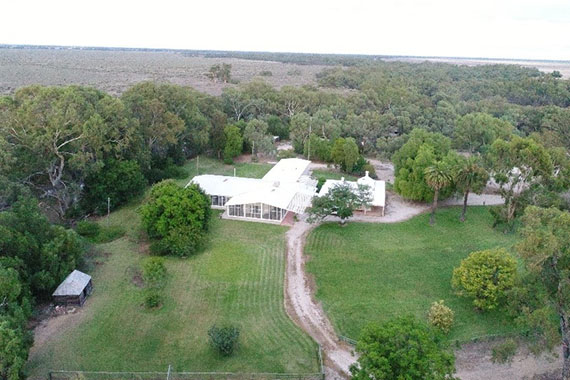Caroonboon History

Early records date back as far as 1851 when the property was first held by Clark Irving of the Sydney Sugar Company. The property passed through a number of owners until 1861 when John Dickson purchased the property for 11,000 pounds. Caroonboon Station at that time was 132 square miles in size. The property has been always known as Caroonboon, in aboriginal terminology Caroonboon means bullfrog From historical records it is noted that the Caroonboon homestead was built next to the last waterhole to dry up on the Billabong Creek.
The Dickson family purchased the property with no structural or water improvements, with the family first building a log cabin to accommodate John Dickson, his wife and 4 boys. They shepherded the sheep by day and secured them in brush yards at night. For their first 4 years they lived from hand to mouth until their first wool clip of 40 bales was sold in England in 1865. In 1870 the family moved out of the cramped log cabin to more roomier accommodation when they built a brick homestead, which was built from bricks baked on the property and the roof was red gum shingles from nearby timber. The Billabong Creek flowed only in the winter and wooden dams were built to hold water up for the homestead and various areas.Until drilling for water the only water available was along the creek. Over the the 150 years the property was held in the Dickson name the family weathered severe droughts and floods. Up until the sale of the property the Dickson family were one of two original longest continuously owned properties in the area.
In 2014 Bill Pye and his wife Margie purchased Caroonboon Station from the Dickson family. The purchase of the property fitted well with the strategic plan of incorporating a commercial sheep operation to compliment the stud operation. Operated and managed correctly Caroonboon Station would ensure a reliable income through dry times due to its vegetation mix of salt bushes and grasses. The property is currently running over 15,000 breeding ewes.
The property since change of ownership has seen a massive fencing program carried out incorporating a lane way system to improve the flow of sheep two and from the shearing shed. Other structural improvements such as ram selling complex, ram shed, silos, 3 sets of Proway outer yards and drought containment area have been completed.